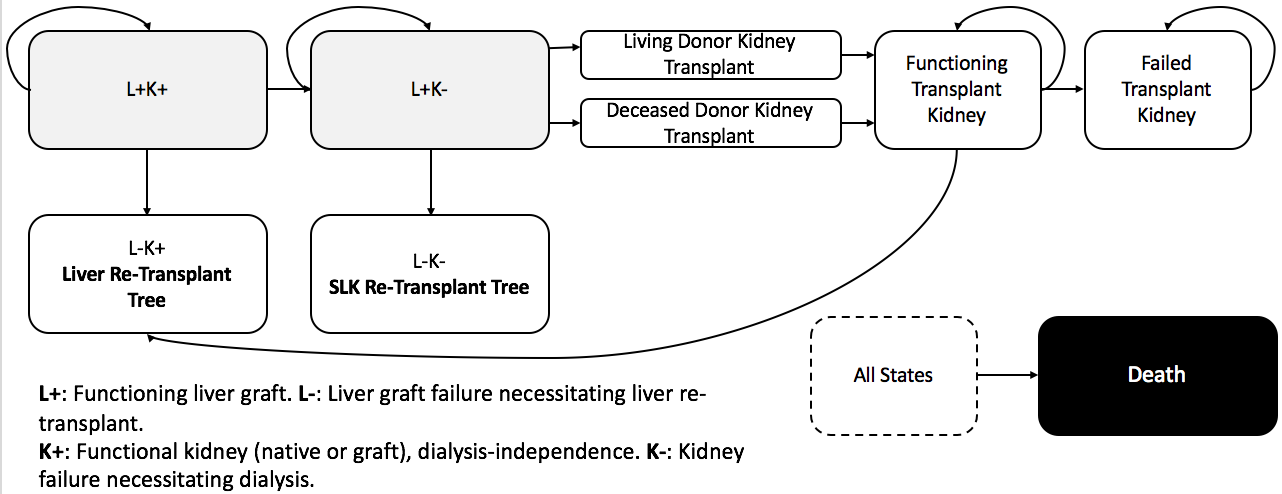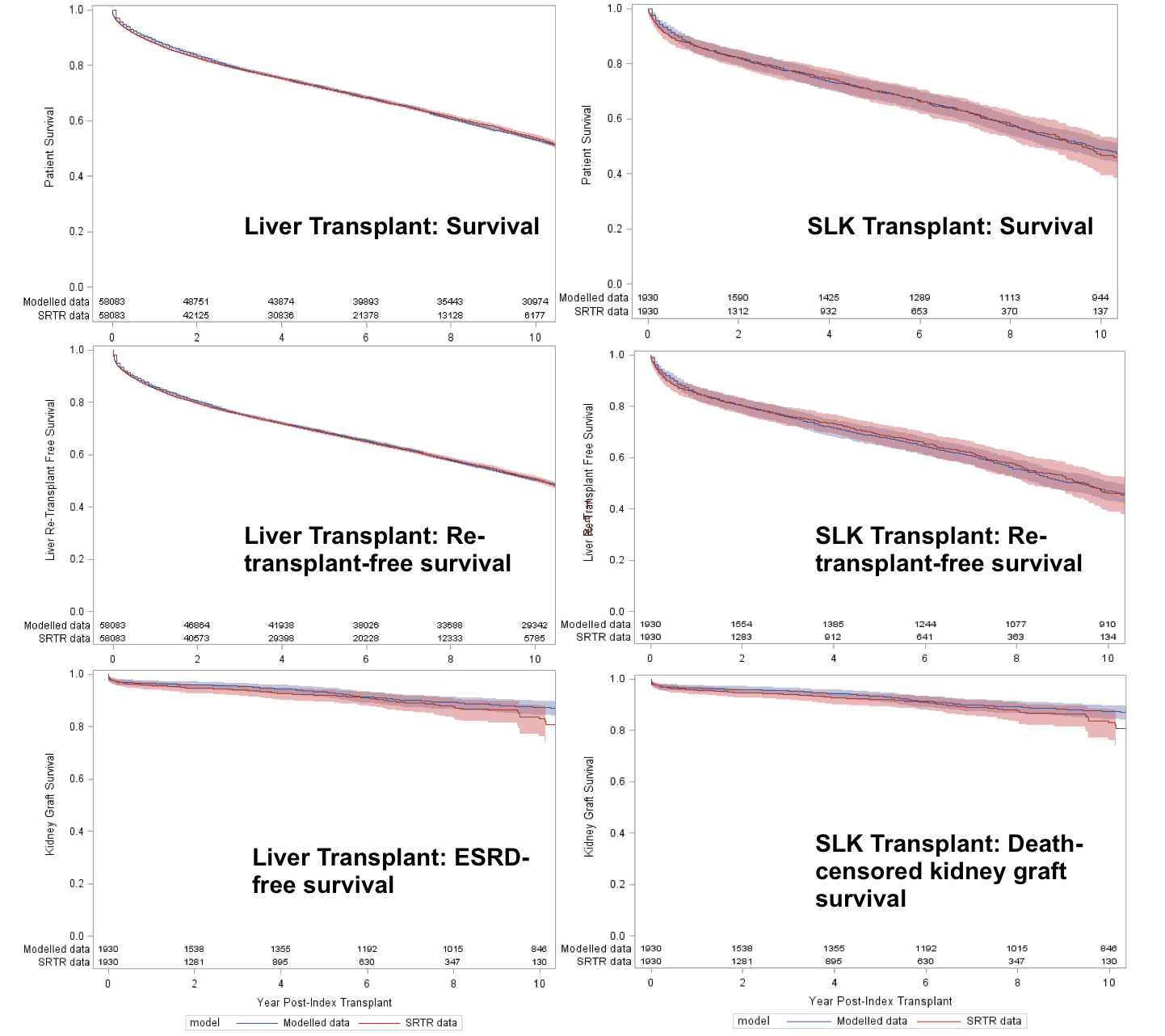A Markov Model for Transplant & Renal Outcomes After Liver & Simultaneous Liver-Kidney Transplants.
1Div Nephrology, Stanford U, Palo Alto
2Div Gastroenterology &
Hepatology, Stanford U, Palo Alto
3Ctr Health Policy, Stanford U, Palo Alto
Meeting: 2017 American Transplant Congress
Abstract number: D283
Keywords: Kidney/liver transplantation, Outcome, Prediction models
Session Information
Session Name: Poster Session D: Non-Organ Specific: Economics, Public Policy, Allocation, Ethics
Session Type: Poster Session
Date: Tuesday, May 2, 2017
Session Time: 6:00pm-7:00pm
 Presentation Time: 6:00pm-7:00pm
Presentation Time: 6:00pm-7:00pm
Location: Hall D1
The Organ Procurement and Transplant Network (OPTN) will implement a set of clinical criteria for simultaneous liver-kidney (SLK) transplant eligibility. Our aim is to build a decision analytic model to study its anticipated impact.
We built a Markov model based on data from the Scientific Registry of Transplant Recipients (SRTR). Adult, first-time liver / SLK transplants 2002-2013 were included. Patients were stratified on kidney function at time of transplant (Table). The rates of post-transplant death, liver re-transplant, and kidney graft failure (SLK only) were estimated from SRTR data using the Fine-Grey method.
| Kidney Function at Time of Transplant | Liver Transplant
N = |
SLK Transplant
N = |
| No kidney failure (eGFR >60ml/min) | 33655 | 0 |
| Kidney failure + does not meet OPTN's criteria for SLK transplant | 17064 | 338 |
| Kidney failure + meets OPTN's criteria for SLK transplant | 1891 | 700 |
| Kidney failure + insufficient data in SRTR to assess SLK eligibility | 5473 | 892 |
At the start of the model, patients underwent a liver or an SLK transplant. The model was run in monthly cycles for a lifetime. Post-transplant outcomes were modelled by Markov states (Figure 1). Transition probabilities were obtained from rates calculated from SRTR data and supplemented with data from literature. The Kaplan-Meier method was used to compare model output to original SRTR data. 60013 patients were included from the SRTR database. Median age at transplant was 55 and 57 for liver and SLK, respectively. Model output agreed with SRTR data, in aggregate (Figure 2) and by stratum. We conclude this is a robust model for transplant and renal outcomes post-liver / SLK transplant.
60013 patients were included from the SRTR database. Median age at transplant was 55 and 57 for liver and SLK, respectively. Model output agreed with SRTR data, in aggregate (Figure 2) and by stratum. We conclude this is a robust model for transplant and renal outcomes post-liver / SLK transplant.
CITATION INFORMATION: Cheng X, Kim W, Tan J, Goldhaber-Fiebert J. A Markov Model for Transplant & Renal Outcomes After Liver & Simultaneous Liver-Kidney Transplants. Am J Transplant. 2017;17 (suppl 3).
To cite this abstract in AMA style:
Cheng X, Kim W, Tan J, Goldhaber-Fiebert J. A Markov Model for Transplant & Renal Outcomes After Liver & Simultaneous Liver-Kidney Transplants. [abstract]. Am J Transplant. 2017; 17 (suppl 3). https://atcmeetingabstracts.com/abstract/a-markov-model-for-transplant-renal-outcomes-after-liver-simultaneous-liver-kidney-transplants/. Accessed December 25, 2025.« Back to 2017 American Transplant Congress
